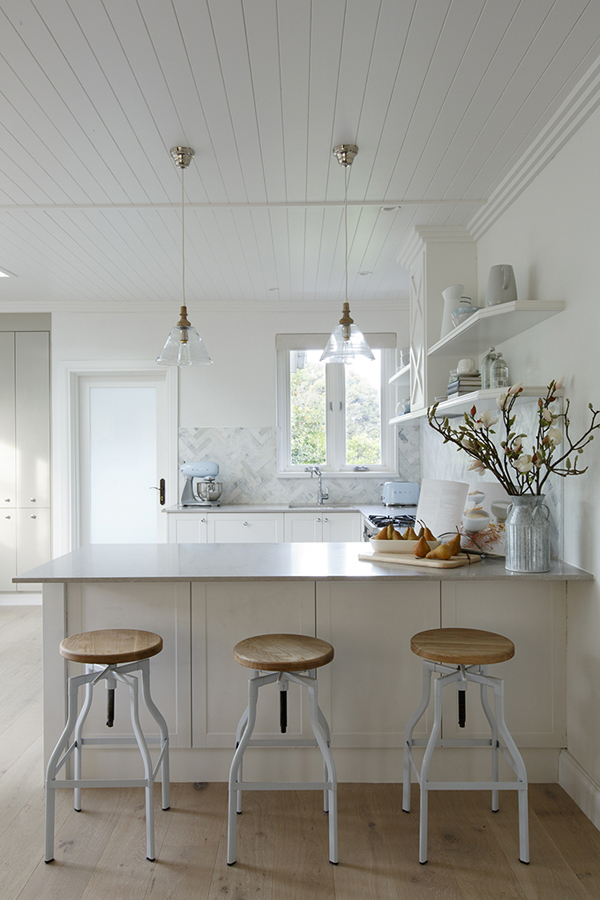
The harsh reality of reality television
Share
Image above: Carly and Leighton’s industrial kitchen on which took out a perfect score on Reno Rumble. Images appear courtesy of Freedom Kitchens.
Reality television is one of the most popular forms of televised entertainment in Australia, with programs such as House Rules averaging “2.3 million viewers, enjoying an astonishing 25% year-on-year growth,” says Seven’s director of network production Brad Lyon of its second season.
Of course, these ‘reality’ shows are carefully constructed narratives, with storylines that present a hyper-realised, condensed version of the design process. Out of the proliferation of such shows in the mainstream comes a growing trend for design enthusiasts labelling themselves design experts, muddying the waters between the role of the so-called ‘informed client’ and the qualified designer.
Renovation reality TV programs such as The Block and House Rules have risen in popularity over the last few years. Contestants undertake home renovations in only a matter of days or weeks with small budgets and an abundance of large, helpful gift cards from sponsors, working to win a substantial amount of money. A further discrepancy in realistic expectations arises from the judging process, where celebrity designers pass critique as though contestants are trained in the profession, at times excessively berating competitors.
Upon completion of an intensive ‘reality’ 12-week project, many exit feeling that they are now qualified to design in the real world. After winning The Block Sky High in 2013, contestants Alisa and Lysandra went on to start their own design company, but found the need to undertake training to successfully fulfil their new roles within the industry.
Other renovation programs such as Grand Designs can offer a somewhat more accurate depiction of design projects and the challenges that can occur. Though Grand Designs home owners do often enjoy significant financial privilege, the show makes a point of showing the ongoing personal strain of building while living on site, and being well over-budget. Crucially, both the Australian and UK Grand Designs demonstrate continual consultation with appropriate professionals, and show projects being completed over a period of years – aspects overlooked within the breakneck pace of commercial television.
The relatively recent explosion of social media platforms has also lead to the success of design-focused websites and apps such as Pinterest and Houzz, both offering millions of organised images representing the gamut of design. Houzz in particular gives a platform for interior designers to demonstrate their skills and present recent projects to a much wider audience.
Houzz is, in effect, an almost how-to-guide for amateur design enthusiasts, with each image having embedded links that will take the consumer to relevant websites to purchase pieces. With a direct line to information on designers, products, techniques and trades, the average homeowner has the tools to affordably replicate the look in their own homes, creating a potential misconception that engaging a design professional is an unnecessary investment.
How does this affect an accredited industry of designers and decorators? It can severely impact the crucial client-designer relationship by undermining a designer’s skills and service. The responsibility rests within the profession to assert the value of genuine design, and maintain relevance in an rapidly evolving industry.

















